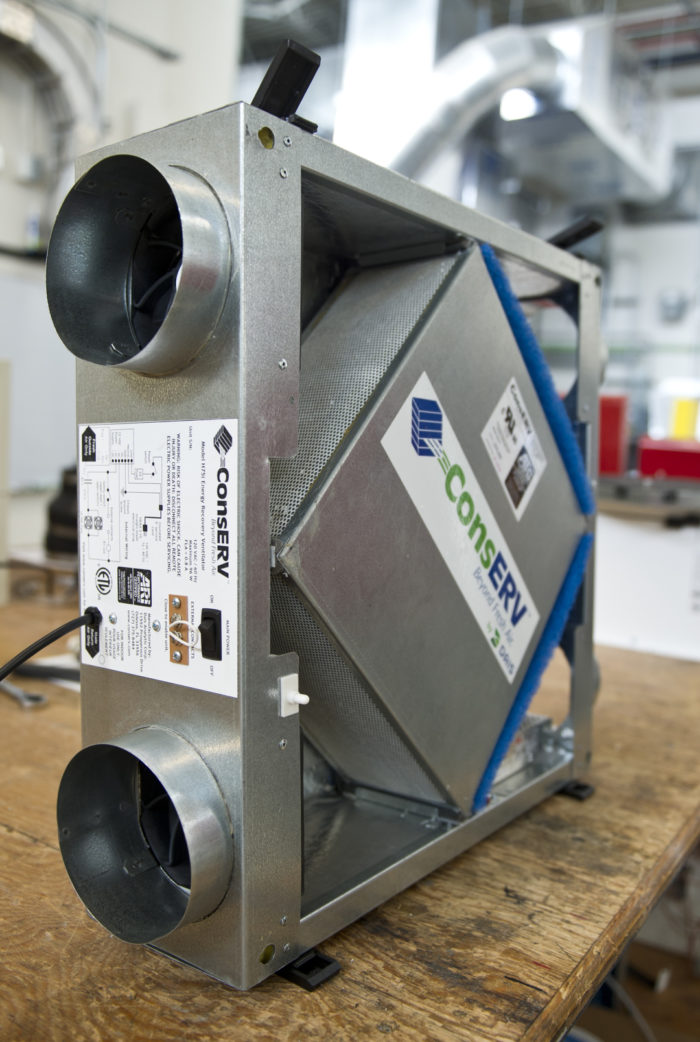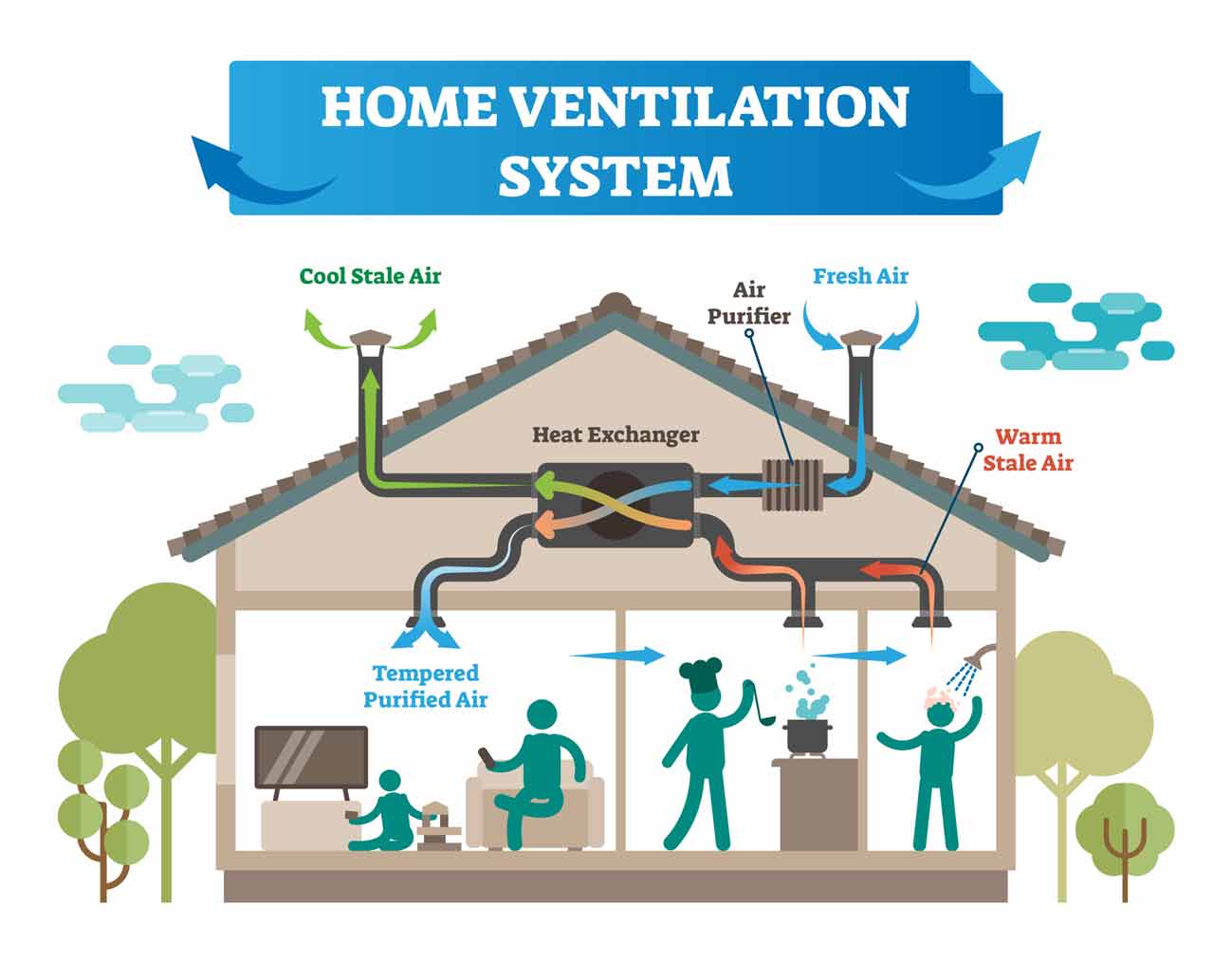10 Essential Reasons Why HRV Enhances Home Sustainability
Revealing the Key Conveniences and Uses of Heat Recovery Ventilation in Lasting Style
Heat Recovery Ventilation (HRV) systems play a necessary function in sustainable layout. They help with a continuous exchange of stagnant interior air with fresh outside air, significantly boosting indoor air quality. Furthermore, HRVs add to energy performance by recovering heat from worn down air, which can reduce energy expenses. Comprehending the complex benefits and applications of HRVs reveals their importance in contemporary style. What other benefits do these systems provide in the search of sustainability?
Comprehending Heat Recovery Ventilation Systems
Heat recovery ventilation (HRV) systems are developed to enhance indoor air high quality while minimizing energy loss. These systems utilize a mechanical air flow approach to exchange stale indoor air with fresh outside air, making certain a continual supply of clean air. By recording warmth from the exhaust air, HRVs prerequisite incoming air, lowering the demand on heating and cooling systems. This procedure not only improves thermal comfort however additionally adds to energy efficiency in property and industrial buildings. Additionally, HRV systems help regulate humidity levels and lower interior pollutants, promoting a healthier living atmosphere. Their tactical application is crucial for attaining lasting layout objectives, as they offer a balance between energy conservation and owner wellness.
How HRV Systems Job
While several may recognize with air flow systems, recognizing just how warmth healing ventilation (HRV) systems operate is vital for appreciating their benefits. HRV systems work by exchanging stagnant interior air with fresh exterior air while moving warm in between the 2 streams. This process occurs in a heat exchanger, where warmth from the outgoing air warms the inbound air throughout chillier months, lessening energy loss. Conversely, in warmer months, the system can cool incoming air using the cooler outgoing air. HRVs are outfitted with followers to assist in air flow and filters to remove particulates, making sure a constant, balanced air flow procedure. This ingenious design not only enhances energy effectiveness but also adds to maintaining a comfy indoor setting.
Enhancing Indoor Air Quality
Indoor air top quality can greatly impact health and health, making effective air flow necessary in contemporary homes. Heat Recovery Ventilation (HRV) systems play a crucial duty in preserving interior air high quality by constantly trading stagnant indoor air with fresh outside air. This procedure not only minimizes air-borne contaminants however additionally decreases humidity levels, which can result in mold and mildew growth and respiratory problems. HRV systems filter inbound air, removing irritants and particulates, consequently giving a healthier living environment. Furthermore, these systems assist remove odors and unstable organic substances (VOCs) frequently discovered in family products. By making sure a regular flow of clean air, HRV systems add to an overall improved interior ambience, promoting comfort and well-being for owners.
Power Efficiency and Expense Financial Savings
Energy effectiveness attracts attention as a considerable benefit of Heat Recovery Ventilation (HRV) systems. By recording and reusing the warm from worn down interior air, HRVs minimize the energy needed for heating incoming fresh air, leading to lowered energy consumption. This performance equates right into reduced energy bills, using considerable cost financial savings for homeowners and organizations alike. Additionally, HRV systems usually receive energy efficiency incentives and rebates, additionally boosting their economic allure. With time, the first financial investment in HRV modern technology can bring about a positive roi via lowered power costs. As a result, the combination of HRV systems not only advertises sustainable design yet likewise gives a sensible remedy for accomplishing lasting power savings and monetary benefits.
Environmental Advantages of HRV

A wide navigate to these guys range of ecological benefits arises from the application of Heat Recovery Ventilation (HRV) systems. By effectively transferring warmth from exhaust air to inbound fresh air, HRVs significantly lower the power needed for heating and cooling down areas. This energy efficiency converts to decrease greenhouse gas emissions, contributing to a decrease in the total carbon footprint of structures. Additionally, HRV systems enhance indoor air top quality by continually distributing fresh air, thereby lowering the focus of indoor toxins and allergens. Moreover, the decrease in energy usage help in saving natural deposits, making HRVs a necessary element of lasting style. In general, the ecological advantages of HRVs play an essential role in advertising a healthier world and fostering green building methods.
Versatile Applications in Modern Architecture
Heat recovery ventilation (HRV) systems are progressively being integrated into both domestic and business architectural jobs. In household settings, HRVs improve interior air top quality while optimizing energy performance. In business rooms, these systems maximize ventilation methods, demonstrating their flexibility in modern-day architectural applications.
Residential Projects Combination
While contemporary architecture significantly stresses sustainability, the integration of warm recuperation ventilation systems in domestic projects has actually become a functional solution for improving indoor air quality and power effectiveness. These systems successfully move heat from exhaust air to incoming fresh air, lessening power loss and decreasing home heating or cooling down needs. In brand-new builds and retrofits alike, warm recovery ventilation can be seamlessly included, supplying home owners with a much healthier living setting while decreasing utility costs. Furthermore, with raising recognition of ecological effects, more architects and contractors are identifying the lasting benefits of these systems. Therefore, heat recuperation air flow has become an essential component of lasting property layout, showcasing convenience and dedication to green techniques.
Industrial Areas Optimization
As modern-day commercial areas progress to meet the needs of sustainability and effectiveness, the application of heat recovery air flow systems becomes a vital method for enhancing interior environments. These systems facilitate the exchange of stale indoor air with fresh outside air while recovering warm power, significantly decreasing energy consumption. This not just enhances comfort for owners however additionally helps in reducing operational expenses. Flexible applications can be observed in workplaces, retail spaces, and universities, where air high quality and temperature level control are vital. Furthermore, incorporating warmth recovery air flow aligns with environment-friendly building qualifications, even more advertising environmental obligation. Inevitably, adopting such systems in industrial style not just adds to sustainability objectives however also fosters much healthier, a lot more effective areas for customers.
Integrating HRV Into Sustainable Style Practices
Incorporating warmth recovery ventilation (HRV) systems right into sustainable design methods uses substantial advantages in power effectiveness and indoor air quality. By making use of HRV, designers can create cost-effective solutions that not only decrease power consumption however also enhance the general comfort of indoor settings. This placement with sustainability goals positions HRV as a necessary element in contemporary architectural approaches.
Power Effectiveness Enhancement
By including warm recuperation air flow (HRV) systems right into sustainable layout methods, designers and builders can significantly improve power effectiveness in modern constructions. HRV systems operate by capturing warmth from outbound stale air and transferring it to inbound fresh air, lessening the energy needed for heating or cooling down indoor areas. This process not just reduces dependence on traditional HVAC systems however likewise lowers general power usage. Furthermore, HRV systems can assist keep a constant interior temperature, minimizing peak energy demands. By incorporating these systems, structures can achieve considerable decreases in energy costs and carbon impacts, lining up with sustainability objectives. Ultimately, HRV innovation stands for a useful solution for improving power performance in the check this built setting, advertising even more accountable resource use.
Indoor Air Quality Enhancement
How can warmth healing ventilation (HRV) systems contribute to premium interior air top quality in modern buildings? HRV systems successfully exchange stale interior air with fresh exterior air while recovering heat, reducing temperature level fluctuations. This process minimizes the concentration of indoor toxins, such as volatile organic compounds (VOCs), allergens, and dampness, which can weaken air quality and influence passenger wellness. By preserving ideal humidity degrees and making sure a constant supply of clean air, HRVs assist develop a much healthier indoor atmosphere. In enhancement, these systems can be incorporated into lasting design practices, advertising power efficiency alongside boosted air high quality. HRV Heat Recovery Ventilation. HRV modern technology plays a vital role in progressing total occupant convenience and health in contemporary building styles.
Cost-efficient Style Solutions

Regularly Asked Questions
What Upkeep Is Required for Heat Recovery Ventilation Systems?

Upkeep for heat healing air flow systems usually entails normal filter replacements, cleansing of warmth exchangers, assessment of fans and ducts, and ensuring proper drain. These tasks help maintain effectiveness and prolong the system's life expectancy in time.
Can HRV Systems Be Mounted in Existing Structures?
Heat recovery ventilation systems can undoubtedly be installed in existing buildings. HRV Heat Recovery Ventilation. Retrofitting needs mindful planning and evaluation of the structure's format, guaranteeing compatibility with current systems while maximizing energy effectiveness and interior air top quality
How Do HRV Systems Effect Noise Levels Indoors?
HRV systems can affect indoor sound degrees by presenting audio from exterior resources through ventilation. Top notch installments usually include sound-dampening attributes, decreasing sound influence while offering effective air exchange and keeping convenience inside.
Exist Any Type Of Downsides to Using HRV Solutions?
The drawbacks of utilizing HRV systems consist of prospective high first prices, upkeep difficulties, and the possibility of decreased indoor air top quality if filters are not consistently altered, which might result in concerns with humidity levels.
Just how Do I Pick the Right HRV System for My Requirements?
Selecting the best heat healing air flow system involves assessing particular needs, such as developing dimension, environment, and energy efficiency objectives. In addition, reviewing system attributes, setup needs, and upkeep factors to consider is vital for peak efficiency and complete satisfaction.